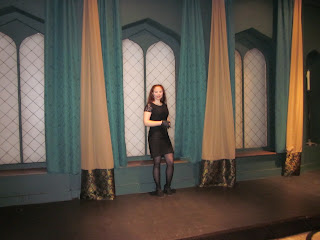 |
| A portrait of George Clifford, the Earl of Cumberland, wearing the Queen's glove on his hat, and proudly displaying his lance and tournament armor. By Nicholas Hilliard. Picture acquired through Wikimedia Commons. Image public domain. |
"...This noble gentleman (George Clifford) by her majesties express commandment is yerely (without respect unto his age) personally present at these military exercises, there to see, survey, and as one most careful and skillful to direct them."
-from Honor Military and Civill, by William Segar.
George Clifford, the 3rd Earl of Cumberland, was one of the commanders of the fleet that drove off the Spanish Armada. He also served as Queen Elizabeth I's tournament champion for a time. When Queen Elizabeth I gave him her glove, the Earl of Cumberland wore it on his person forever-after, displaying it on the front of his hat.
 |
A portrait of a portrait of George Clifford, the 3rd Earl of Cumberland, circa 1590, wearing Queen Elizabeth I's favor, a glove, on his hat. After Nicholas Hilliard. Image public domain through Creative Commons licensing, NPG, London.
|



































.jpg)







